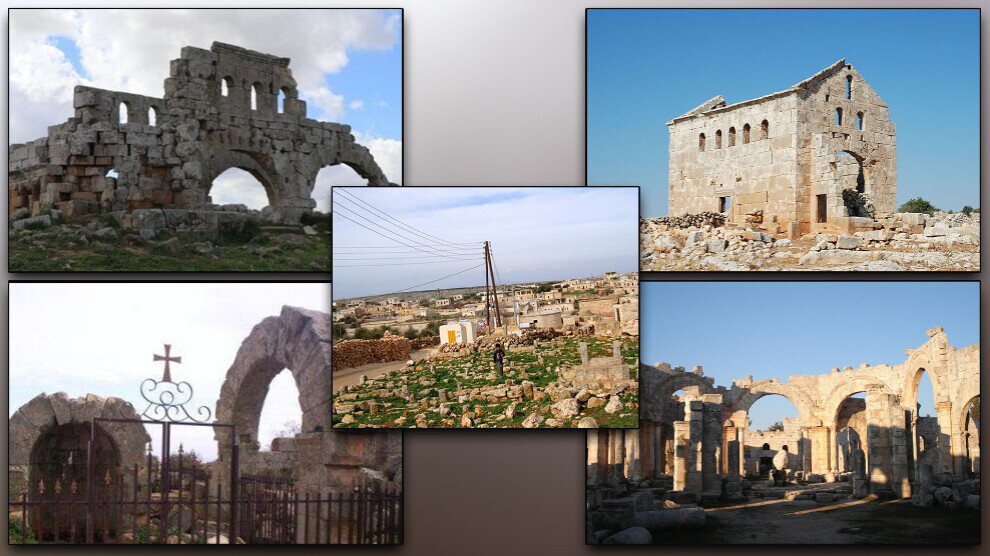Historic buildings in Afrin’s Barad village looted by Turkish-backed factions
The historic buildings in Afrin’s Barad village have been looted by Turkish forces and Turkish-backed factions in order to destroy the identity of the village.

HESNA MIHEMED
Shahba -Every village in North and East Syria has its own historical heritage. The Barad village of Afrin city in North and East Syria is a village having a historical heritage from the Byzantine and Syriac periods. The village has churches, temples and ancient baths from the Byzantine period; however, they have been looted and destroyed by the Turkish forces and Turkish-backed factions.
The meaning of Barad
Barad village is located south of Afrin and known as the cradle of Christianity in the region. Saint Maron, a Syriac Christian hermit monk, lived in the village. The building of the village dates back to the 2nd Century CE. During the Byzantine period, Barad was known as the capital of Mount Simeon. The village is also known as Qaphar, the general term for a village in Aramaic. Barad means cold in Aramaic.
The history of the Barad village
There are two monasteries and a cathedral in the village. The cathedral, known as the Church of Julianos, was built between 399 and 402 CE. The Church of Julianos was one of two large three-aisled basilicas; the other five were smaller, with only a single aisle among the seven churches that were built in northern Syria before 400 CE. The second church in the village was built in the 6th century. The monastery of Barad known also as Qasr al-Barad includes a scattered complex of buildings: small chapel, pandocheion, tower, porticoes.
It was an olive trade center
In the 7th century CE, the Barad village became a trade center and its population increased. It was an olive trade center. In the 10th century, Barad became the defense center of the Byzantine Empire and thus religious buildings were turned into defense fortresses where military forces were stationed. There are still buildings and bathhouses made of limestone. There are also many ancient cemeteries in the village. Two areas were found in the temple in the village, a research conducted in the temple revealed that these areas were used to extract olive oil at that time.
Destruction of the historic buildings in the village
On March 21, 2018, the village came under the control of the Syrian National Army. Since then, the historic buildings have been looted and destroyed by the Turkish forces and Turkish-backed factions to destroy the ancient identity of the village.
Who is Saint Maron?
Saint Maron was born in Syria in the middle of the 4th century. He was a priest who later became a hermit, retiring to the Taurus Mountains in the region of Cyrrhus, near Antioch. His holiness and miracles attracted many followers, and drew attention throughout the empire. After his death, his followers founded a religious Christian movement that became known as the Syriac Maronite Church, in full communion with the Holy See and the Catholic Church. Every year, A ceremony is held in the village in memory of Saint Maron.
